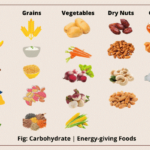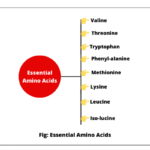30 Solar System Quiz – Test Your Knowledge of Planets
Welcome to this ultimate solar system quiz! This MCQ quiz contains 30 multiple-choice questions based on the solar system, which will test knowledge in the solar system as well as also enhance your knowledge through explanations provided.
These 30 multiple-choice questions are very important for those who are students or preparing for the competitive exams like SSC CGL, RRB, UPSC, IES, etc. You will get the scorecard at the end of quiz which will tell about your performance. So, are you ready to test your knowledge and score 30/30? Let’s start from the question number 1.

1. What type of star is the Sun?
A. White dwarf
B. Red giant
C. Yellow dwarf
D. Neutron star
c
The Sun is a G-type main-sequence star, commonly called a yellow dwarf. It is a medium-sized star in the main phase of its life cycle.
2. Of which element is the sun mainly composed?
A. Helium
B. Oxygen
C. Carbon
D. Hydrogen
d
The sun is mainly composed of hydrogen. It accounts for approximately 92.1% of the Sun’s composition by mass. The next most abundant element is helium, which makes up about 7.9% of the Sun’s mass.
3. What is the outermost layer of the Sun’s atmosphere called?
A. Photosphere
B. Chromosphere
C. Corona
D. Core
c
The outermost layer of the sun is corona. It extends millions of kilometers into space and is visible during a total solar eclipse.
4. Which process generates solar energy in the sun?
A. Combustion
B. Nuclear fusion
C. Nuclear Fission
D. Radioactive decay
b
Solar energy is generated by nuclear fusion at the core of the Sun under immense temperature and pressure. In this process, hydrogen nuclei fuse to form helium, releasing a tremendous amount of energy in the form of heat and light.
5. Approximately how long does it take for sunlight to reach Earth?
A. 8 second
B. 8 minutes
C. 8.3 minutes
D. 12 minutes
c
Light from the Sun takes about 8 minutes and 20 seconds to reach Earth, traveling a distance of approximately 150 million kilometers.
6. Which is the hottest part of the sun?
A. Corona
B. Core
C. Chromosphere
D. None of these
b
The core of the Sun is the hottest part, with temperatures reaching around 15 million °C (27 million degrees Fahrenheit). In the core, nuclear fusion occurs where hydrogen atoms fuse into helium.
7. What is the approximate age of the Sun?
A. 500 million years
B. 1 billion years
C. 4.6 billion years
D. 10 billion years
c
Scientists estimate that the Sun formed around 4.6 billion years ago and is about halfway through its expected life span.
8. What particles are released in the solar wind?
A. Photons
B. Protons and electrons
C. Neutrons
D. All of the above
b
The solar wind consists mainly of charged particles like protons and electrons ejected from the corona of Sun.
9. Which of the following planets are known as terrestrial planets or inner planets?
A. Mercury
B. Venus
C. Earth
D. All of the above
d
Mercury, Venus, Earth, and Mars are called inner planets. They are also known as terrestrial planets. While Jupiter, Saturn, Uranus, Neptune, and Pluto are the outer planets. They are also known as Jovian planets.
10. Which of the following planets are known as inferior planets?
A. Earth
B. Mercury
C. Venus
D. Both B and C
d
Mercury and Venus planets are known as inferior planets because their orbits are closest to the Sun than the orbit of Earth. Mercury and Venus have no satellites.
11. Which is the closest planet to the Sun?
A. Mercury
B. Venus
C. Mars
D. Earth
a
Mercury is the innermost planet of the Solar System. It orbits the Sun at an average distance of about 58 million km. Mercury has no atmosphere and also satellites. Its days are scorching hot and nights are frigid.
12. Which is the hottest planet in the Solar System?
A. Mercury
B. Venus
C. Mars
D. Jupiter
b
Venus is hottest planets of the solar system because of its thick atmosphere of carbon dioxide, which traps heat through a strong greenhouse effect. Surface temperatures average around 465°C. It has no natural satellites.
13. Which is the densest planet in the Solar System?
A. Jupiter
B. Earth
C. Saturn
D. Venus
b
Earth is the densest planet in the Solar System, with an average density of 5.51 g/cm³ due to its iron-rich core. It is also known as blue planet.
14. Which planet in the solar system is famous for its Great Red Spot?
A. Saturn
B. Jupiter
C. Uranus
D. Neptune
b
The Great Red Spot is a giant storm on Jupiter that has been raging for at least 300 years. It’s larger than Earth and appears red due to unknown chemical reactions in the atmosphere of Jupiter.
15. Which planet of the solar system is known as morning or evening star?
A. Mercury
B. Earth
C. Venus
D. Mars
c
Venus is also called the morning or evening star. The day and night temperature are almost the same on the Venus. It is also nearest planet to the earth.
16. Which planet of the solar system is known as the “Red Planet”?
A. Venus
B. Jupiter
C. Saturn
D. Mars
d
Mars is known as the “Red Planet” in the solar system because of its reddish appearance, which is due to iron oxide (rust) on its surface. It has a thin atmosphere comprising of nitrogen and argon. Mars has two satellites named Phabos and Dynamos.
17. Which is the largest planet in the Solar System?
A. Uranus
B. Jupiter
C. Saturn
D. Neptune
b
Jupiter is the largest planet in the Solar System, with a diameter of about 143,000 km. It is a gas giant planet and has a massive atmosphere made mostly of hydrogen, helium, methane, and ammonia. Its bright appearance is due to the thick atmosphere that reflects most of the sun light falling on it. The nick name of this planet is “The Lord of the Heavens”.
18. Which planet of the solar system has the most prominent ring system?
A. Uranus
B. Jupiter
C. Saturn
D. Neptune
c
Saturn is famous for the most prominent ring system in the solar system. These rings are bright, massive, and complex, making them the most spectacular of any planet. The rings are made of ice and rock particles, which are easily visible from Earth with a telescope. Saturn is also called elegant planet.
19. Which planet is known for having the strongest winds in the Solar System?
A. Earth
B. Saturn
C. Jupiter
D. Neptune
d
Neptune is known for having the fastest winds in the Solar System. These winds can reach speeds of over 1,200 miles per hour (2,000 kilometers per hour), exceeding the speed of sound. Neptune has also five rings. Its atmosphere is mainly composed of hydrogen.
20. Which planet is only in the solar system that rotates on its side, with its axis tilted over 90 degrees?
A. Saturn
B. Neptune
C. Uranus
D. Venus
c
Uranus is the only planet in the Solar System that rotates almost on its side, with its axis tilted at an angle of approximately 97.77 degrees. This means its equator is nearly at a right angle to its orbit around the Sun.
21. Which of the following is the largest moon of Saturn?
A. Europa
B. Titan
C. Ganymede
D. Enceladus
b
Titan is the largest moon of Saturn and the second-largest natural satellite in the Solar System, after Jupiter’s Ganymede. It has a dense atmosphere and even lakes and rivers made of liquid methane and ethane.
22. What is the name of the largest moon in the Solar System?
A. Titan
B. Callisto
C. Io
D. Ganymede
d
Ganymede, which is a moon of Jupiter, is the largest moon in the Solar System. It is even larger than the planet Mercury.
23. Which planet has the largest number of known moons as of current data?
A. Jupiter
B. Saturn
C. Neptune
D. Uranus
b
According to current data, Saturn has overtaken Jupiter in the number of confirmed moons, with over 140 identified natural satellites.
24. Which moon is famous for its active volcanoes?
A. Europa
B. Titan
C. Triton
D. Io
d
Io is the most volcanically active body in the Solar System, with hundreds of volcanoes on its surface. It is the moon of Jupiter.
25. What is the name of the largest moon of Neptune?
A. Nereid
B. Triton
C. Proteus
D. Larissa
b
Triton is the largest moon of Neptune.
26. Which of the following is the smallest dwarf planet in the solar system, according to current astronomical research?
A. Ceres
B. Eris
C. Pluto
D. Hygiea
d
According to current astronomical research, the smallest dwarf planet in the solar system is Hygiea.
27. Which is the largest dwarf planet in the solar system, according to current astronomical research?
A. Eris
B. Pluto
C. Ceres
D. None of these
b
The largest dwarf planet in our solar system is Pluto, according to the current astronomical research.
28. What is the name of the natural satellite of the earth?
A. Moon
B. Titan
C. Europa
D. Phobos
a
The Moon is the only natural satellite of earth. It is the fifth-largest moon in the Solar System. Its size is approximately one-fourth that of the earth. The moon has no atmosphere, no twilight, and no sound. The light from the moon takes 1.3 seconds to reach the earth.
29. Which is the largest asteroid in the solar system?
A. Vesta
B. Ceres
C. Pallas
D. Hygiea
b
The largest asteroid in the solar system is Ceres. It’s a dwarf planet located in the main asteroid belt between Mars and Jupiter. Ceres has a diameter of approximately 945.2 km.
30. Which of the following planets are known as twins?
A. Earth and Mars
B. Jupiter and Saturn
C. Uranus and Neptune
D. Mercury and Venus
c
Uranus and Neptune are often called “twin planets” because they are similar in size, mass, composition (both are ice giants), and blue color due to methane in their atmospheres.
Quiz Results
Total Questions: 0
Correct Answers: 0
Incorrect Answers: 0
Score: 0%







